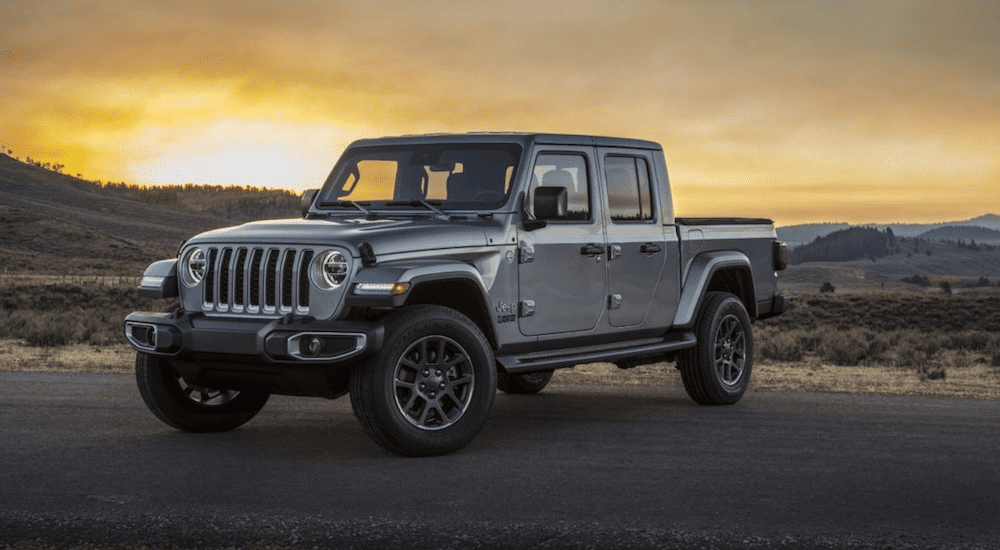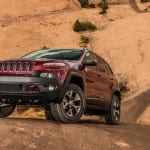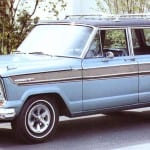For lovers of both power and performance, it’s hard not to look fondly upon 2018 as the year of the high-powered variant. While offering jacked-up or juiced up versions of popular models is nothing new to the automotive industry, it never felt so blatant, competitive – and dare we say, thrilling – as it has over the past year or so.
And while my opinion is very much just that, it’s hard to argue that above all other automakers FCA has all but ruled the roost, piling Demons upon Challengers, and Hellcats upon Demons.
But while street-racing performance and design is bound to catch the attention of some, their inherent lack of utility and off-roading credibility is an instant disqualified for others. As such, 2018 garnered another round of nostalgic, retroactive praise for its introduction of certain performance SUVs and trucks.
Sure, FCA offered up the Trackhawk, but its overall refinement does little for those who are looking to get some mud on their tires. So, if that’s your bag (but you still want some high-end refinement in terms of design and cabin experience) there’s always the Raptor.
No-one has really come close to it in terms of combining power and performance ratings. Offering refinement, innovative design and – let’s be honest – thirteen inches of suspension travel. Few would argue that the Raptor has set an impressive bar, but it would be naive for anyone to think that most competitors (at least domestic) aren’t developing something in the hopes of stealing Ford’s crown. So what kind of obstacles will they need to tackle?
Equipped with a 3.5-liter EcoBoost V6 paired to a 10-speed automatic, the Raptor serves up a booming 450 hp and 510 lb-ft of torque. Achieving the latter as low as 3500 RPM’s the Raptor offers smooth throttle response, impressive terrain adaptability and – quite honestly – an in-cabin experience that’s just luxurious enough to impress any passenger, whether on the road or off the beaten path.
And now, Ford’s 2019 refresh of the Raptor has only served to widen the gap. While they have yet to replace the twin-turbo V6 mustang mill with an even more ambitious V8, Ford has made the wise choice of further fortifying the Raptor’s well-revered suspension. Noting the inclusion of hi-tech adaptive dampers, it’s worth pointing out that these dampers feature added resistance to the compression side of the shock. With compression resistance increased by a solenoid, the shock offers less likelihood of bottoming-out, stiffening intuitively – and as needed – thanks to a forward-mounted height sensor. In other words, the 2019 Raptor knows when its on solid ground, and it knowns when its not. More importantly, it has been engineered to offer as smooth a transition as possible, in-between.
Needless to say, if we’re looking to any automaker to unseat the Raptor – at least in terms of off-roading versatility – it would be short-sighted of us not to highlight Jeep as the most qualified challenger. And with their release of the long-awaited, truck-inspired Jeep Gladiator still topping any number of headlines, should we really be surprised that hushed whispers abound regarding the development of a new Gladiator-platform hi-po offering, named (tentatively) “Hercules”.
But let’s not get ahead of ourselves, because the 2020 Jeep Gladiator is very much the topic of countless conversations. 4×4 capability, best-in-class towing, best-in-class payload, the midsize Gladiator merges all the best features of the Wrangler’s open-air experience with the functionality of a truck, without simply tacking a bed onto a Jeep.
Equipped with a 3.6-liter V6 mated to either a six-speed manual or eight-speed automatic, the Gladiator delivers confidently with 285 horsepower and 260 lb-ft torque ratings. And Jeep has also promised the introduction of a 3.0-liter turbodiesel V6 which, despite a drop in horse, will deliver 442 lb-ft of torque. But a max towing capacity of 7650 lbs and payload capacity of 1600 lbs positions the Gladiator as a capable competitor to the Raptor, as least in terms of utility numbers.
So, in essence, a Jeep branded overlander with comparable hauling and towing numbers could pose a genuine threat to the Raptor, depending on the powertrain they decide to go with. Might they opt for the 6.4-liter V8 that’s found a home in the Durange SRT, churning out 475 horsepower and a 470 lb-ft torque rating? Or perhaps a Hemi-powered V8 might be in the cars. If Jeep is able to come within throwing distance of the Raptor’s performance numbers, it’s reasonable to say that ripples will be made. Few Ford loyalists would consider jumping ship, but it would certainly reinforce FCA’s strong foothold in specialty performance offerings.
Ultimately, time will tell if Jeep takes Hercules past the point of prototype testing or “review for market viability”, but it certainly poses an interesting opportunity. And while it’ll take serious forward motion on Jeep’s part to convince us that the Hercules poses a genuine threat to the Raptor’s well-earned automotive celebrity status, there’s no denying that – if nothing else -the Hercules would have it’s own niche appeal, generating some hardcore excitement and demand among enthusiasts.
What do you think about the idea of the Jeep Gladiator Hercules? Does the Gladiator provide a platform upon which the next hi-po’d off-roader, designed to steal the heart of trail bosses and rock crawlers could be built? And might it rival the Raptor, bringing something to the party that Ford has yet to do? As we said, time will tell, but we’ll certainly keep our eyes peeled as the updates filter in.




